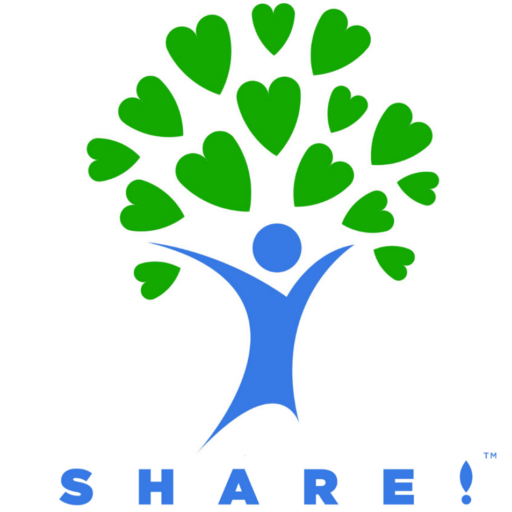Research Shows Self-Help Support Groups Work
Click for pdf: Research Shows Self-Help Support Groups Work,pdf
- Cut the re-hospitalization of mental health consumers by 50% (4) (7) (10) (12) (16) (19)
- Reduce the number of days spent in the hospital by one-third (4) (10) (19)
- Reduce significantly the amount of medication needed to treat mental illness (4) (6) (19)
- Move large numbers of people out of the system into productive lives (4) (19)
- Empower participants to collaborate with clinical staff resulting in better adherence to medication regimes (12) (16)
- Effects are realized in weeks and sustained for years (4) (6) (16) (19) (22)
- Reduce drug and alcohol abuse (9) (11) (14) (18) (23) (25)
- Reduce demands on clinicians’ time (8) (16)
- Increase empowerment (4) (6) (16) (19) (20)
- Provide community support—the suspected reason that people in developing countries recover from schizophrenia at nearly twice the rate that they do in developed countries (16) (24)(25) (26) (27)
- Provide mentoring opportunities that improve the outcomes of both the mentor and the person being mentored (5) (17) (21)
- Reduce criminal behavior (14) (23)
- Increase family resources and reduce family stress (3)
- Increase consumer satisfaction (8) (16)
- Are underutilized by clinicians because of incorrect preconceived ideas about self-help and the lack of professional training on self-help (16) (22)
Self-Help Bibliography
- Bond, G.R. (2001) “Implementing Supported Employment as an Evidenced-Based Practice” Psychiatric Services 52(3):313-322.
- Campbell, J & Leaver, J. (2003) Emerging New Practices In Organized Peer Support Alexandria, VA: National Technical Assistance Center for State Mental Health Planning and the National Association of State Mental Health Program Directors.
- Cook, J. A. et al (1999)”The Effect of Support Group Participation on Caregiver Burden Among Parents of Adult Offspring with Severe Mental Illness” Family Relations 48:405-410.
- Edmunson, E.D. et al (1982) “Integrating Skill Building and Peer Support in Mental Health Treatment” in Jeger, G. and Slotnick, R.S. (eds) Community Mental Health and Behavioral Ecology New York:Plenum Press pp. 127-139
- Emrick, C. D. et al (1993) “Alcoholics Anonymous: What is currently known?” in McCrady, B. S. and Miller, W. R. (eds) Research on Alcoholics Anonymous: Opportunities and Alternatives New Brunswick, N.J.: Rutgers Center of Alcohol Studies pp. 41-75.
- Finn, Lizzie (no date) “Mutual Help Groups and psychological wellbeing: A study of GROW, a community mental health organization” Paper distributed on the Self-Help Researchers’ listserv.
- Galanter, M. (1988) “Zealous Self-Help Groups as Adjuncts to Psychiatric Treatment: A Study of Recovery, Inc.” American Journal of Psychiatry 145(10):1248-1253.
- Hodges, J. Q. et al (2003) “Use of Self-Help Services and Consumer Satisfaction with Professional Mental Health Services” Psychiatric Services Vol 54 No. 8 1161-1163.
- Humphreys, K. & Moos, R. (2001) “Can encouraging substance abuse patients to participate in self-help groups reduce demand for health care?” Alcoholism: Clinical and Experimental Research 25:711-716.
- Kennedy, M. (1990) Psychiatric Hospitalizations of GROWers. Paper presented at the Second Biennial Conference on Community Research and Action, East Lansing, Michigan.
- Kingree, J. B. & Thompson, M. (2000) Mutual help Groups, Perceived Status Benefits, and Well-Being: A Test with Adult Children of Alcoholics with Personal Substance Abuse Problems” American Journal of Community Psychology 28:325-342.
- L. F. (1988) “Mutual Aid for Affective Disorders: The Manic Depressive and Depressive Association.” American Journal of Orthopsychiatry 58(1):152-155.
- Lieberman, M. & Snowden, L. (1994). “Problems in Assessing Prevalence and Membership Characteristics of Self-Help Group Participants.” In Powel, T. (ed) Understanding The Self-Help Organization: Frameworks And Findings pp. 32-49. Thousand Oaks, CA: Sage Publications.
- McAuliffe, W. E. (1990) “A Randomized Controlled Trial of Recovery and Self-Help for Opiod Addicts in New England and Hong Kong” Journal of Psychoactive Drugs 22(2): 197-209.
- Mental Health Policy Resource Center (1991) “The Growing Mental Health Self-Help Movement.” Policy In Perspective Washington, D.C.
- National Depressive and Manic-Depressive Association (1999) National DMDA Support Group Survey: Does Participation in a support group increase treatment compliance? Chicago: DMDA
- Powell, T.J. et al (2000) “Encouraging people with mood disorders to attend a self-help group” Journal of Applied Social Psychology 30:2270-2288.
- Pisani, V. D. et al (1993) “The Relative Contributions of Medication Adherence and AA Meeting Attendance to Abstinent Outcome for Chronic Alcoholics” Journal of Studies on Alcohol 54:115-119.
- Raiff, N.D. (1984) “Some Health Related Outcomes of Self-Help Participation: Recovery, Inc. as a Case Example of a Self-Help Organization in Mental Health” in Gartner, A. and Riessman, F. (eds) The Self-Help Revolution New York: Human Sciences Press pp. 183-193.
- Roberts, L. J. et al (1999) “Giving and Receiving Help: Interpersonal Transactions in Mutual-Help Meetings and Psychosocial Adjustment of Members” American Journal of Community Psychology 27:841-868.
- Sisson, R. W. (1981) “The Use of Systematic Encouragement and Community Access Procedures to Increase Attendance at Alcoholic Anonymous and Al-Anon Meetings” American Journal of Drug and Alcohol Abuse 8(3):371-376
- Snyder, M. D. and Weyer, M.E. (2000) “Collaboration and Partnership:Nursing Education and Self-Help Groups” Nursing Connections Vol. 13 No. 1 Spring
- Watson, C. G. et al (1997) “A Comparative Outcome Study of Frequent, Moderate, Occasional, and Non-attenders of Alcoholics Anonymous” Journal of Clinical Psychology 53:209-214.
- The World Health Report (2001) “Schizophrenia” in Mental Health: New Understanding, New Hope.
- John F Kelly, Alexandra Abry, Marica Ferri, Keith Humphreys, Alcoholics Anonymous and 12-Step Facilitation Treatments for Alcohol Use Disorder: A Distillation of a 2020 Cochrane Review for Clinicians and Policy Makers, Alcohol and Alcoholism, Volume 55, Issue 6, November 2020, Pages 641–651, https://doi.org/10.1093/alcalc/agaa050
- Drebing, C. E., Reilly, E., Henze, K. T., Kelly, M., Russo, A., Smolinsky, J., Gorman, J., & Penk, W. E. (2018). Using peer support groups to enhance community integration of veterans in transition. Psychological Services, 15(2), 135–145.
- Lee MH, Seo MK. Community Integration of Persons with Mental Disorders Compared with the General Population. Int J Environ Res Public Health. 2020;17(5):1596. Published 2020 Mar 2. doi:10.3390/ijerph17051596
Research Shows Peer Outreach is Essential
Click for pdf: Research Shows Peer Outreach is Essential.pdf
- Use of Peer staff with homeless individuals results in decreases in the number of homeless days and reduced relapse to homelessness. (2; 3; 14)
- Use of Peer staff with homeless individuals results in significant increased rates of employment and satisfaction with finances. (6; 17)
- Peer staff are more willing and better to engage mentally ill people on the street. (9)
- Peer based outreach and the use of the expertise of homeless and formerly homeless persons should be actively sought out. (5)
- Employing Peers is a key component of building trust in homeless outreach. (7)
- Outreach conducted by peers is effective in locating, engaging, and completing assessments of the clients’ perceived needs. (5)
- Peers convey a sense of understanding and make a bridge between street life and the world of “professionals” whom homeless individuals don’t initially trust. (5)
- Peer outreach strategies reduce HIV risk in low-income, drug-using communities. (8)
- Peer support has significant impacts on quality of life, drug/alcohol use, and social support. (1)
- Shared experiences, role modeling, and social support are suggested to be vital aspects of peer support and moderate changes in homeless clients. (1)
- Peers reduce hospital admissions, relapses, increase coping skills, and improve overall quality of life for those with mental illness. (4; 11; 12; 16)
- Peers have a unique ability to engage with those who are socially excluded. (10; 14).
- Peers have experiential knowledge which enables them to genuinely empathize and connect with clients. (1)
References
- Barker, S. L., Maguire, N., Bishop, F., & Stopa, L. (2017). Critical elements of peer support and the experience of peer supporters helping the homeless. Manuscript in prep.
- Bean, K. F., Shafer, M. S., & Glennon, M. (2013). The impact of housing first and peer support on people who are medically vulnerable and homeless. Psychiatric Rehabilitation Journal, 36(1), 48–50. doi:10.1037/h0094748.
- Boisvert, R. A., Martin, L. M., Grosek, M., & Clarie, A. J. (2008). Effectiveness of a peer-support community in addiction recovery: participation as intervention. Occupational Therapy International, 15(4), 205–220.
- Davidson, L., Chinman, M., Sells, D., & Rowe, M. (2006). Peer support among adults with serious mental illness: a report from the field. Schizophrenia Bulletin, 32(3), 443–450. doi:10.1093/schbul/sbj043.
- Erickson S, Page J. To dance with grace: outreach and engagement to persons on the street. In: Fosburg LB, Dennis DL, Eds. Practical Lessons: The 1998 National Symposium on Homelessness Research Washington, DC: U.S. Department of Housing and Urban Development; U.S Department of Health and Human Services 1999.
- Felton, C. J., Stastny, P., Shern, D. L., Blanch, A., Donahue, S. A., Knight, E., & Brown, C. (1995). Consumers as peer specialists on intensive case management teams: impact on client outcomes.Psychiatric Services, 46(10), 1037–1044. doi:10.1176/ ps.46.10.1037.
- Kryda AD, Compton MT. Mistrust of outreach workers and lack of confidence in available services among individuals who are chronically street homeless. Commun Ment Health J 2009; 45: 14450.Latkin, C. A., Sherman, S., & Knowlton, A. (2003). HIV prevention among drug users: Outcome of a network-oriented peer outreach intervention. Health Psychology, 22(4), 332–339. https://doi.org/10.1037/0278-6133.22.4.332
- Lyons JS, Cook JA, Ruth AR, et al. Service delivery using consumer staff in a mobile crisis assessment program. Commun Ment Health J 1996; 32: 33-40.
- Pilote, L., Tulsky, J. P., Zolopa, A. R., Hahn, J. A., Schecter, G. F., & Moss, A. R. (1996). Tuberculosis prophylaxis in the homeless. A trial to improve adherence to referral. Archives of Internal Medicine, 156(2), 161–165.
- Salzer, M. S. (2002). Consumer-delivered services as a best practice in mental health care delivery and the development of practice guidelines. Psychiatric Rehabilitation Skills, 6(3), 355–382. doi:10.1080/10973430208408443.
- Solomon, P. (2004). Peer support/peer provided services underlying processes, benefits, and critical ingredients. Psychiatric Rehabilitation Journal, 27(4), 392–401.
- Stahler, G. J., Shipley, T. E., Kirby, K. C., Godboldte, C., Kerwin, M. E., Shandler, I., et al. (2005). Development and initial demonstration of a community-based intervention for homeless, cocaine-using, African American women. Journal of Substance Abuse Treatment, 28, 171–179.
- Tulsky, J. P., Pilote, L., Hahn, J. A., Zolopa, A. J., Burke, M., Chesney, M., & Moss, A. R. (2000). Adherence to isoniazid prophylaxis in the homeless: a randomized controlled trial. Archives of Internal Medicine, 160(5), 697–702.
- van Vugt, M. D., Kroon, H., Delespaul, P. A., & Mulder, C. L. (2012). Consumer-providers in assertive community treatment programs: associations with client outcomes. Psychiatric Services, 63(5), 477–481. doi:10.1176/appi.ps.201000549.
- Wallcraft, J., Rose, D., Reid, J., & Sweeney, A. (2003). On our own terms: Users and survivors of mental health services working together for support and change. London: Sainsbury Centre for Mental Health.
- Weissman, E. M., Covell, N. H., Kushner, M., Irwin, J., & Essock, S. M. (2005). Implementing peer-assisted case management to help homeless veterans with mental illness transition to independent housing. Community Mental Health Journal, 41(3), 267–276. doi:10.1007/s10597-005-5001-2.
SHARE! Offers Research Opportunities
Click for pdf: SHARE! Offers Research Opportunities
SHARE! makes a special effort to partner with researchers as all of SHARE!’s programs are informed by research. Past collaborations include:
a) SHARE! arranging for surveys to be filled out by 100 to 200 SHARE! participants,
b) reviewing manuscripts on self-help related topics,
c) being primary informants for promising self-help support group practices and,
d) allowing students to study SHARE!’s structure and management.
If you have an idea, we are happy to discuss it with you! Call (310) 846-5270 to speak to someone today regarding how SHARE! can partner with you on your research.
Want More Information?
Call (310) 305-8878 (Culver City, CA) or (213) 213-0100 (Downtown Los Angeles).
You can also email us at info@shareselfhelp.org.
SHARE! empowers people to change their own lives and provides them a loving, safe, non-judgmental place where they can find community, information, and support.
Click subscribe to join the SHARE! Mailing List.
Follow SHARE! on social media:






